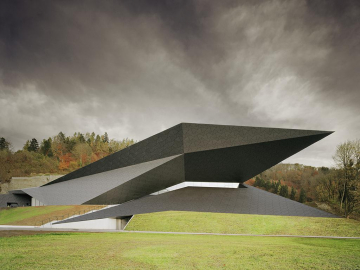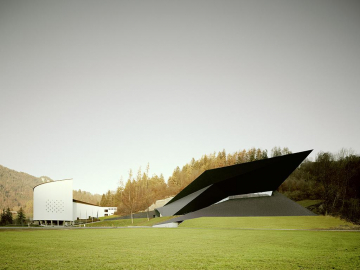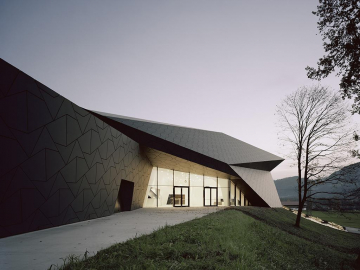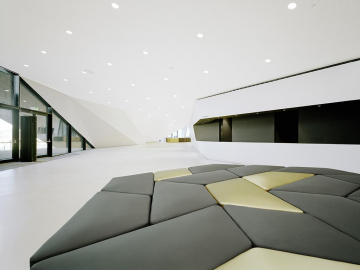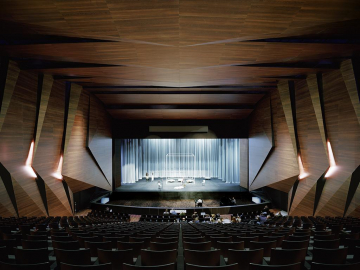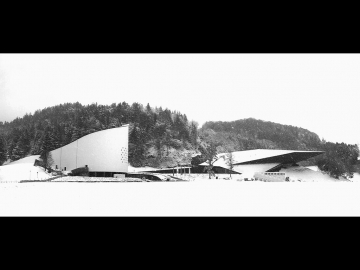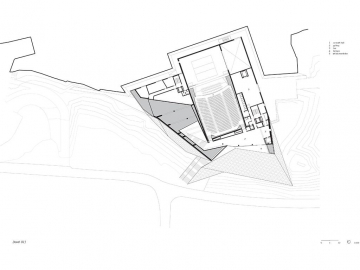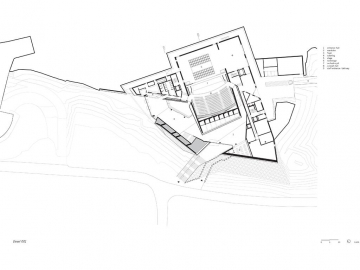Erl Festival Hall
The movement from the outside to the inside of the building just like from the foyer into the concert hall is shaped not only architecturally but also acoustically, creating a visual choreography of spatial transitions. The concert space itself resembles a totally still sound-box waiting for the first impulse to make it resound.
Creating spatial sensation appropriate to the location at hand is one of the central focal points of DMAAs architecture. In the case of the Festival Hall in Erl, the sharp-edged geometry of the building is a unique response to the surrounding topography and the already existing festival hall. The imprint continues inside the building, where the requirement to create a concert hall of international renown constitutes another essential parameter of the design. Here, paths and spatial layout are designed both functionally as well as atmospherically with vast communication zones, narrowing and widening circulation areas and varying ceiling heights.
The orientation of the festival hall relates to the existing landscape, the dynamic gesture of the historical counterpart, the background of rock formations. The topographic imprinting in the landscape continues inside the building where two central parameters direct the architectural approach: the interplay between the buildings interior and its surroundings and a lading concert hall of international repute. Flowing visual and functional spatial references define the design method: Spaces of different zoning and configurations implement the focus on communication and peace, dynamics and concentration. Architectural conditions in the buildings interior are devolved into a subtle control of the motion sequences through their sensual perception. The access staircase is integrated into the terrains topography and leads visitors into the building.
The foyer allows a wide range of impressions of the surrounding natural environment and the existing summer festival hall. In the opposite direction, a staircase leads to the gallery on the level above where the relationship between interior and exterior relations is once again impressively experienced by the extensively glass-fronted western façade. Secondary functions of the building are also located at the upper level. Paths and spatial layout are designed both functionally as well as atmospherically: vast communication zones, narrowing and widening circulation areas and varying ceiling heights translate the tectonic building geometry in a sensually comprehensible space. Coherently, the approach to the concert hall is emphasised by the gentle rise of the entry level. The concert hall, which is situated at the centre of the building like a shell and is anchored to the rock at the back, connected to the foyer via two accesses on each level. The passage from the foyer into the concert hall is accompanied by spatial and atmospheric transformation: Dynamics, variability and asymmetry of the foyer give way to static peace and orthogonality.
Premiating the context of the building and the physical presence of its users is in the centre of the architectural approach of DMAA. The concept is connected to the existing fabric and enters in dialogue with the environment, as an integral parts of an overall system.
Site area: 9 700 m²
Total floor area: 8 800 m²

